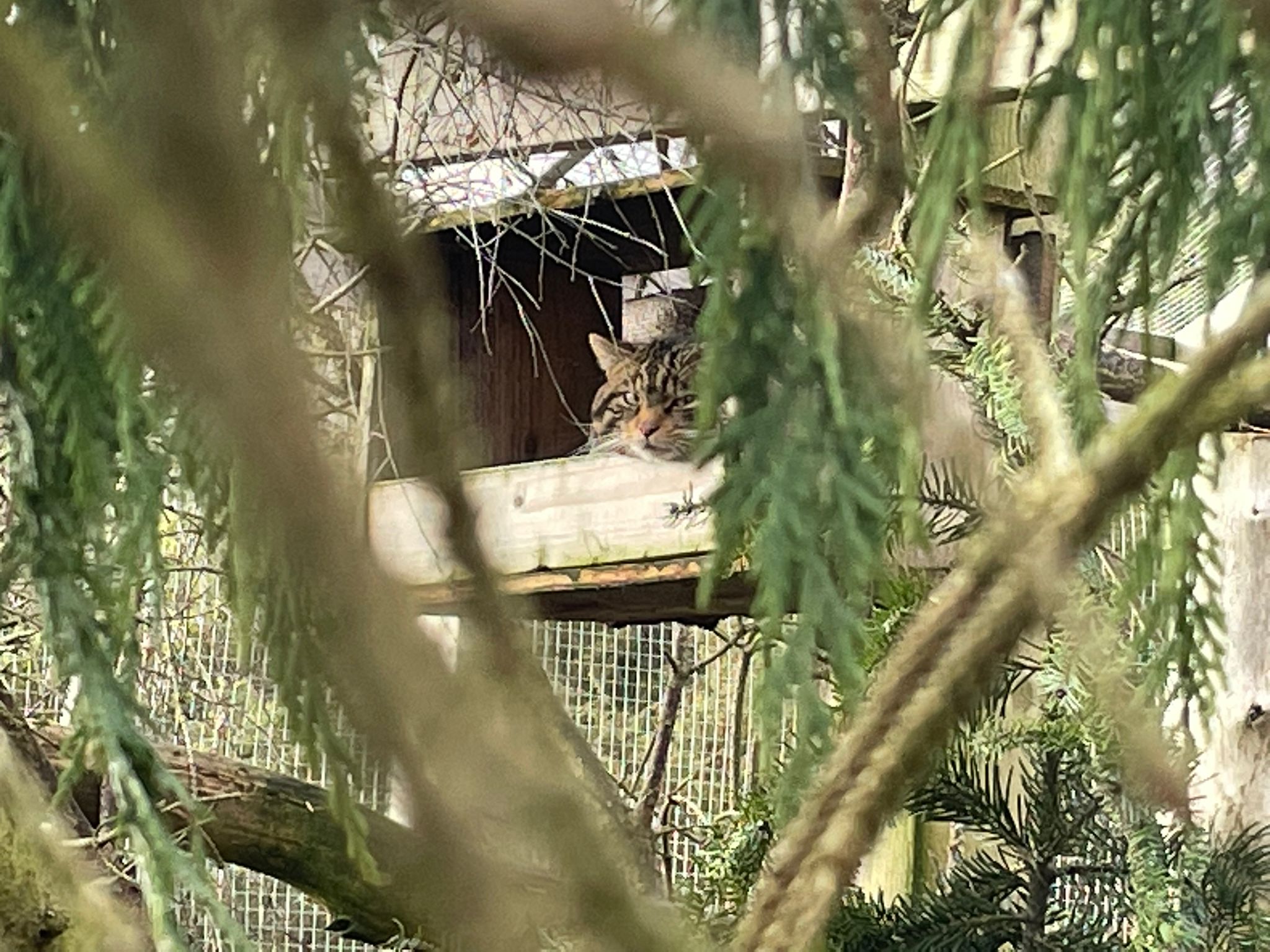An insight into ex-situ conservation management for the Saving Wildcats project
The first release of wildcats to the Cairngorm National Park in 2023 marked a milestone in wildcat recovery and conservation in Scotland. A significant part of the Saving Wildcats project is breeding wildcats for release to restore the Scottish population. This approach not only provides a lifeline for the species but is also a model that could be replicated for other endangered native species across the UK.
While 18 cats bred at the centre are now out in the wild being tracked by the expert Saving Wildcats field team, I am going to take this opportunity to highlight some of the work “behind the scenes” over the last five to ten years with regards to captive population management that allowed us to get to this point. I will give an overview of the key population management work we have done to date and highlight how these ex-situ activities have been critical in helping us take the first step towards saving the wildcat in Scotland.
It is important to note that although there may be a captive population of any given species, this does not automatically mean this population could support a species recovery project. Anything from low numbers, poor genetic diversity, health issues or low reproduction or poor recordkeeping could render such a population too fragile or unsuitable for the removal of individuals to supply a release programme.
In 2015, the Royal Zoological Society of Scotland (RZSS) took over the UK Conservation Breeding Programme for wildcats. At this time, the programme had only 64 individual wildcats and there was a lack of historical data about how the individuals were related and their hybrid status. This meant the ability to make effective population management decisions was, at the time, compromised.
Over the following years, with RZSS working as a partner to Scottish Wildcat Action, the first national conservation project with a vision to restore wildcats in Scotland, we implemented an array of population management techniques to both grow the population and improve the quality of our understanding about it, including data published in the peer-reviewed Journal of Evolutionary Applications in 2019. This was done with the knowledge that one day the captive population may be a critical tool to support ongoing conservation efforts. This was also an agreed action on the Scottish Wildcat Conservation Action Plan. A key task for us was to genetically sample the entire captive population to assess levels of hybridisation and start the process of a “molecular reconstruction of the pedigree”. Although a complicated process, it meant we could then fill the historical gaps related to the parentage of the wildcats and start to carry out detailed population analysis for the first time, which would help us make more informed breeding recommendations to grow the population.
Fast forward to 2019 when an IUCN report confirmed the critical status of wildcats in Scotland, the need for wildcat releases was recommended and Saving Wildcats, led by RZSS, was launched. At this point the status of the captive population and its ability to aid conservation efforts had significantly improved. Following years of hard work, collaboration between the many captive holders of wildcats across the UK, improved breeding and the implementation of best practice guidance (both for animal management and population management), the population had increased to 120 individuals by the end of 2019. With this improved breeding success, the UK Conservation Breeding Programme for wildcats could finally act as a source to support recovery efforts.
As part of the Saving Wildcats project, we completed the construction of a dedicated Conservation Breeding for Release Centre (CBRC), at the Royal Zoological Society of Scotland’s Highland Wildlife Park. The centre offers dedicated enclosure space for both breeding and pre-release management and was the final tool that paved the way for our breeding and release approach. In the CBRC our team of expert keepers implement a “hands off” (minimal disturbance) management approach to breed the wildcats and prepare the kittens for an eventual challenging life in the wild. As we move into our third year of breeding, we can already look back at the successes so far and take pride in our hard work. Our first year of breeding resulted in 21 surviving kittens, with 19 wildcats released into the wild. Our second year of breeding resulted in 13 surviving kittens which are now being prepared for release this year. As we move into our third year of breeding, we are once again confident of another successful year.
Captive populations are often referred to and regarded as long-term insurance policies for endangered species. However, what is clear is that the quality of this insurance policy is only as good as the status of the population. Without good collaboration, best practice guidance, effective population management and a high standard of animal care and management, the ability of such populations to support conservation can be limited regardless of the need of wild populations.
The process to get the captive wildcat population into a position where, without negatively impacting it, we could (and have) removed animals for the purpose of releasing them to support the recovery efforts in Scotland has been long and challenging, BUT thankfully we now have a more sustainable population that has the potential to help save the UK’s most endangered terrestrial mammal.

